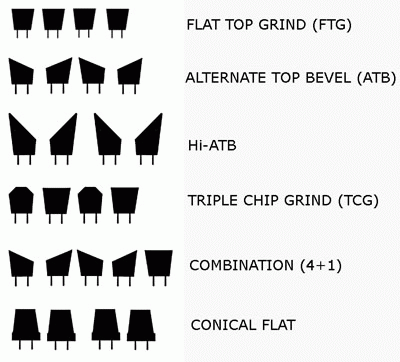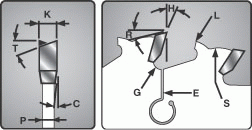This article was reprinted with permission from Wood Tech Tooling, www.woodtechtooling.com.
Sawblade Selection
Cut it out!
ATB, TCG, 4+1, Gullet, Laser Cut, Expansion Slots, Stabilizers. Are you having a hard time selecting the right blade for your job? This educational section will spell it out for you. In this 101 section, we’ll cover saw blade technical information, terminology and the features and benefits that go into making the best saw blades on the market. First is a diagram showing saw blade terminology and tooth configurations to help you in determining which blade is recommended for your needs.


How Quality Blades Are Produced:
Saw blades come in all shapes and sizes. Building the best tools starts with using the best raw materials. Here are just a few of the features that separate our blades from the rest:
Laser Cut Steel Ensures Stable, Flat Blades:
A true and flat blade simply outperforms a stamped blade. Laser Cut blades use harder steel that is more resistant to warping. Lower cost punching processes adversely stress the steel, causing blade flexing and "wandering" within the cut.
Anti-Vibration Design offer Real Benefits:
Freud’s anti-vibration design stabilizes the blade to provide a superior finish, and long cutting life. No stabilizer needed! This design reduces chatter leaving a flawless cut in laminates and veneer thus, making an additional scoring blade obsolete. No scoring blade needed!
Superior Grades of Carbide Provide Longer Life and Maximize Finish:
Our manufacturers use only the highest grade Micro-Grain carbides designed specifically for woodworking. Freud even goes one step further in producing their own MicroGrain carbide with Titanium in a variety of formulations specifically designed for the application. Most manufacturers use standard off-the-shelf carbide, which is normally formulated for metal cutting. These carbides dull quickly.
Special Brazing Processes resist Shock & Stress:
Freud’s innovative Tri-Metal Brazing process bonds the carbide tips with copper brazing sandwiched between two layers of silver alloy. The extra copper layer allows for flexibility and impact resistance when cutting through difficult materials. The result is less cracks in the carbide and failed joints.
Protective Coatings:
Coatings not only make blades easily recognizable, they reduce friction and heat build up. Freud’s exclusive red Perma-Shield™ and CMT’s orange Teflon® coatings prevent pitch build-up, rusting and protects the blade from corrosion. Coated blades stay sharp 50% longer and use 38% less power than uncoated blades.
Expansion Slots Reduce Noise:
They also allow the blade to expand and contract as needed during heated operation.
Pretensioning for Superior Blade Flatness, Cut-After-Cut:
The combination of a superior finish and proper tensioning help our blades stay flat and true, ensuring many years of smooth operation.
This article was reprinted with permission from Wood Tech Tooling, www.woodtechtooling.com.